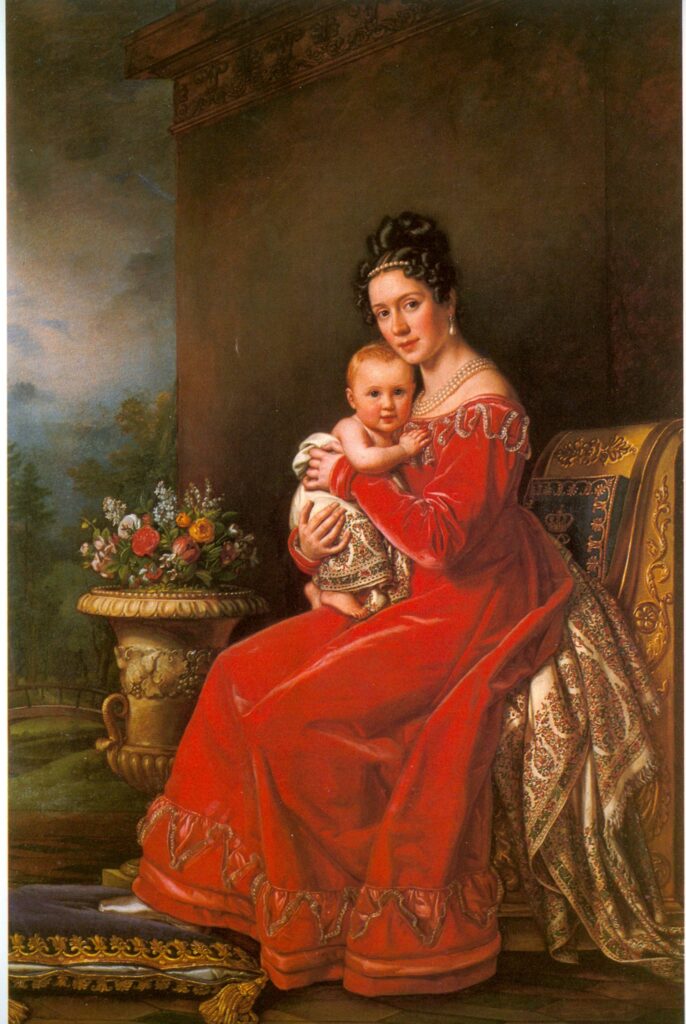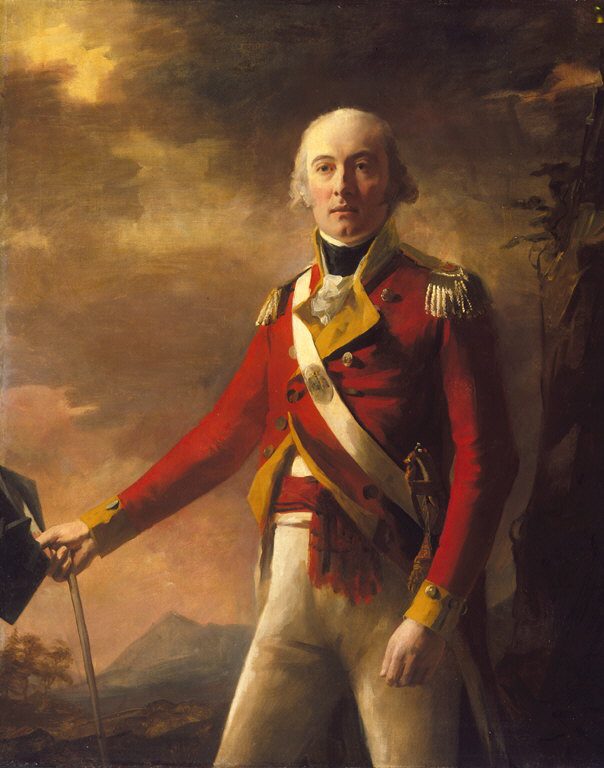To trace the journey and adaptation of the Kashmir shawls across the world through surviving examples both in The
Zay
Zay: (Arabic: costume, Pl. azyaā’), a set of clothes in a style typical of a particular country or historical period. Collection and in other sources
part one covered its unique features, the facts, figures and legends about its appropriation in Europe, identifiable differences and similarities between its European counterparts based on their region of origin.
Wrapped in Social Rank and Scandal
It is interesting how the earliest recorded use of the shawl
Shawl: (Persian: shāl from Hindi: duśālā – Shoulder Mantle), a shawl is a South Asian version of a scarf worn or wrapped loosely over the shoulders and is usually made of wool. in Europe was a symbol of both scandal and social status, specifically for the “nouveau riche”. By the 1770s, Europeans, especially the British merchants – who apart from the few great and wealthy like the directors of the Bank of England - were importing these shawls, sometimes as gifts. This was particularly true for the soldiers of the East India Company which was distinct from the soldiers of the British Army. The difference in their military status was evident on home soil. A portrait of Captain John Foote, a soldier in the British East India Company, painted by Sir Joshua Reynolds between c. 1761-65 is believed to be one of the earliest visual records of a European wearing a shawl
Shawl: (Persian: shāl from Hindi: duśālā – Shoulder Mantle), a shawl is a South Asian version of a scarf worn or wrapped loosely over the shoulders and is usually made of wool. . In the portrait, the shawl
Shawl: (Persian: shāl from Hindi: duśālā – Shoulder Mantle), a shawl is a South Asian version of a scarf worn or wrapped loosely over the shoulders and is usually made of wool. is tied around his waist like a belt, a style that was typical for men of rank in India. John Foote is depicted as an Indian nabob (Hisdustani: nawab a term often used to refer to the men of the royal families in India.) This term in Britain became synonymous for men who had returned from the East after making a fortune. With a society that preferred a good portrait especially those who were interested in showing off their image and newfound wealth, historians interpret the portrait of Captain Foote as an attempt to elevate himself and gain acceptance into the elite British society. The luxurious Indian ensemble completed with the shawl
Shawl: (Persian: shāl from Hindi: duśālā – Shoulder Mantle), a shawl is a South Asian version of a scarf worn or wrapped loosely over the shoulders and is usually made of wool. was probably gifted to him by a true nawab which he was eager to show off as well. Portrait of Captain John Foote of British East India Company by Sir Joshua Reynolds, c. 1761-65; Acc No- YORAG 216; Source- York Museums Trust,
Source
Portrait of Mrs Horton Later Viscountess Maynard by Sir Joshua Reynolds, c. 1767-69; Acc No: 45.59.3; Source: Fletcher Fund, 1945, The Metropolitan Museum of Art,
Source
Know Your Shawls (KYS)
The first half of the 19th century is a testament to a range of changes in the silhouettes of women’s dress in Europe. British women in the Regency era often flaunted a higher waistline with flowing skirts and bodices detailing pintucks and wide puff sleeves. Large shawls often termed as “Long shawls” thus became a perfect accessory to balance such silhouettes resulting in the inclusion of at least one such shawl
Shawl: (Persian: shāl from Hindi: duśālā – Shoulder Mantle), a shawl is a South Asian version of a scarf worn or wrapped loosely over the shoulders and is usually made of wool. in the wedding trousseau of every lady from the aristocracy. This gave rise to the term “Kirking shawl
Shawl: (Persian: shāl from Hindi: duśālā – Shoulder Mantle), a shawl is a South Asian version of a scarf worn or wrapped loosely over the shoulders and is usually made of wool. ” especially in Scotland as they were worn to the kirk or church on the first Sunday after the wedding and then again to the christenings of children. Königin Pauline Württemberg wearing a Kashmir
Paisley
Paisley: (Scottish Gaelic, Pàislig: a town in Scotland), often called buta, boteh, amli, or kalgi in the subcontinent and kazuwah in Arabic, is a Persian tear drop motif with a curved end specially in textiles. Its popularity and subsequent local production in 18th century at Paisley are responsible for its nomenclature. Shawl
Shawl: (Persian: shāl from Hindi: duśālā – Shoulder Mantle), a shawl is a South Asian version of a scarf worn or wrapped loosely over the shoulders and is usually made of wool. by Joseph Karl Stieler, c. 1825; Private Collection: Anonymous
A Kirking
shawl
Shawl: (Persian: shāl from Hindi: duśālā – Shoulder Mantle), a shawl is a South Asian version of a scarf worn or wrapped loosely over the shoulders and is usually made of wool. ; “An Ivory wool long
shawl
Shawl: (Persian: shāl from Hindi: duśālā – Shoulder Mantle), a shawl is a South Asian version of a scarf worn or wrapped loosely over the shoulders and is usually made of wool. ”,
Paisley
Paisley: (Scottish Gaelic, Pàislig: a town in Scotland), often called buta, boteh, amli, or kalgi in the subcontinent and kazuwah in Arabic, is a Persian tear drop motif with a curved end specially in textiles. Its popularity and subsequent local production in 18th century at Paisley are responsible for its nomenclature. c. 1835; Acc No: ZI2020.500776 EUROPE; Source:
The Zay
Zay: (Arabic: costume, Pl. azyaā’), a set of clothes in a style typical of a particular country or historical period. Initiative
Departing for the Promenade (Will You Go Out with Me, Fido?) by Alfred Émile Léopold Stevens, France, c. 1859; Acc No: W1893-1-106; Source: Philadelphia Museum of Art,
Source
A Turnover
shawl
Shawl: (Persian: shāl from Hindi: duśālā – Shoulder Mantle), a shawl is a South Asian version of a scarf worn or wrapped loosely over the shoulders and is usually made of wool. , “Ivory base
shawl
Shawl: (Persian: shāl from Hindi: duśālā – Shoulder Mantle), a shawl is a South Asian version of a scarf worn or wrapped loosely over the shoulders and is usually made of wool. ”,
Paisley
Paisley: (Scottish Gaelic, Pàislig: a town in Scotland), often called buta, boteh, amli, or kalgi in the subcontinent and kazuwah in Arabic, is a Persian tear drop motif with a curved end specially in textiles. Its popularity and subsequent local production in 18th century at Paisley are responsible for its nomenclature., c. 1850-60; Acc No: ZI2020.500779EUROPE; Source:
The Zay
Zay: (Arabic: costume, Pl. azyaā’), a set of clothes in a style typical of a particular country or historical period. Initiative
A Moon shawl
Shawl: (Persian: shāl from Hindi: duśālā – Shoulder Mantle), a shawl is a South Asian version of a scarf worn or wrapped loosely over the shoulders and is usually made of wool. , “Olive green silk and wool shawl
Shawl: (Persian: shāl from Hindi: duśālā – Shoulder Mantle), a shawl is a South Asian version of a scarf worn or wrapped loosely over the shoulders and is usually made of wool. ”, Norwich, c. 1820-30; Acc No: ZI2020.500887EUROPE; Source: The
Zay
Zay: (Arabic: costume, Pl. azyaā’), a set of clothes in a style typical of a particular country or historical period. Initiative Captain Robert Henry Mockler, 44th (Bengal) Native Infantry, Unknown Artists, c. 1841; Acc No- NAM. 1979-01-84-1; Source- National Army Museum Sandhurst, Indian Army Memorial Room,
Source
Major General Andrew Hay by Sir Henry Raeburn, c. 1811; Acc No: G.52.15.1; Source: Gift of John Hay Whitney to the North Carolina Museum of Art,
Source
Hoppner, John; Lieutenant General Sir Thomas Maitland (1759-1824); Thirlestane Castle Trust,
Source
The saga of systematic exploitation by the “Original Corporate Raiders” – as put by the Guardian.
The history of the Kashmir shawls in Europe is a complex one, marked by both admiration and success as well as exploitation and damage. While the Europeans appreciated the beauty and quality of these shawls, their demand for them and overconsumption had negatively impacted both the environment and the people of Kashmir. The requirement of down fleece of the changthangi goat led to the unmitigated hunting of the species leading to the depletion of the animal’s population. The exploitation of local artisans was systematic. The shawls and their craft were commodified by mass producing it in the local markets of Europe and then the cheapened product was sold back in the Indian subcontinent to undercut the originals in value thus depreciating the value of the originals and depriving the local artisans of the price for their labour and skill. The true potential of a hero
However, despite its downfall in the West, the craft and the product survived well beyond the colonial era. It remained an indispensable item in the winter wardrobe of the population across the subcontinent and retained its original respect as an item of luxury amongst both the affluent and the middle class alike. Several economic reforms since 1947 – after the end of the colonial era in the Indian subcontinent – which subsequently resulted in the exponential increase in wealth in the region have helped revive the craft and develop it further. Despite the current political volatility in the Kashmir Valley, the craft is enjoying a life with renewed vigour. 














